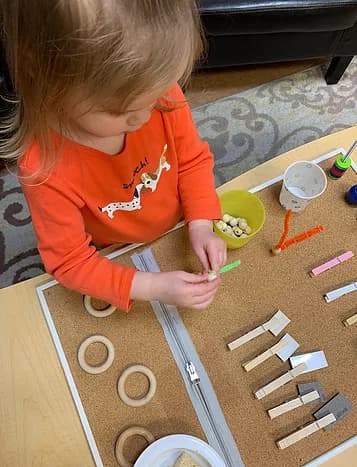
Emergent Curriculum
REGGIO EMILIA APPROACH
Manhattan Schoolhouse encourages a child’s learning through the Reggio Emilia approach to education. The Reggio Emilia approach to education is based on the belief that every child is full of intelligence, curiosity and wonder.

The basis for development in the early years is a child’s ability to use The Hundred Languages available to him or her. These hundred languages a child might use go beyond speech and include “languages” for expression such as drawing, music and dramatic play.
This project based learning approach evolves and adapts to the paths created by the children. As such, the young learners play an active role in creating and shaping the direction of daily education.
The Reggio Emilia structure was developed by Loris Malaguzzi in the 1940’s and named after the Northern Italian city of Reggio Emilia, where Malaguzzi lived and taught. Malaguzzi strongly believed that children learn best not in a linear way but by being allowed to help steer the direction of the learning process through sensory-based experiences and their relationships with others in the classroom. Malaguzzi thought of the school as a construction site where children and adults work together on a daily basis to create new learning experiences.
In addition to The Hundred Languages, there are other guiding principles of the Reggio Emilia approach including the belief that education is not the final product of what a child has learned, but the path he or she took to arrive at that knowledge.

Hundred Languages of Children and the Emergent Curriculum
Our curriculum builds upon the interests of children, revealed and expressed during their talk and play using The Hundred Languages available to him or her. MSH teachers observe, document, brainstorm and collaborate to determine the materials needed to create various projects and pathways for the children to learn through open-ended exploration. Extending this approach, teachers partner with parents and the community to develop the children’s natural inquiry skills.
Daily Documentation
Manhattan Schoolhouse teachers document their work with our children daily in order to create a detailed history of the learning. This empowers us with dynamic insight into the children, which we use to create individual learning goals and strategies.

Environment as The Third Teacher
Children’s art, plants and other collections are displayed both at the children’s and adults’ eye level to enrich and beautify our environment, as we celebrate effort and achievement of all levels.
Children, Parents and Teachers as Partners
All members of our learning community are partners, collaborators and advocates for our children. Teachers respect parents as each child’s first teacher and consistently engage them in the curriculum.
Teachers as Learners
The Manhattan Schoolhouse teacher is a learner alongside the children. The teacher is a researcher, a resource and guide. Teachers carefully listen, observe and document children’s work and the growth of community as they provoke, co-construct and stimulate thinking and collaboration.
